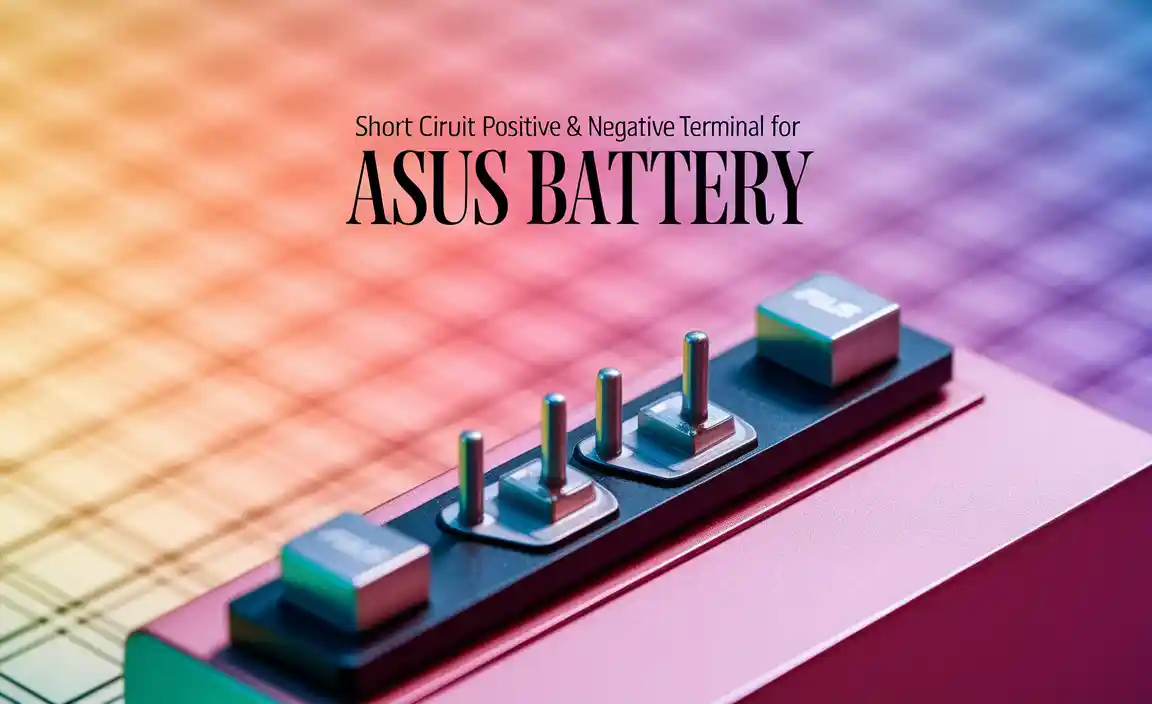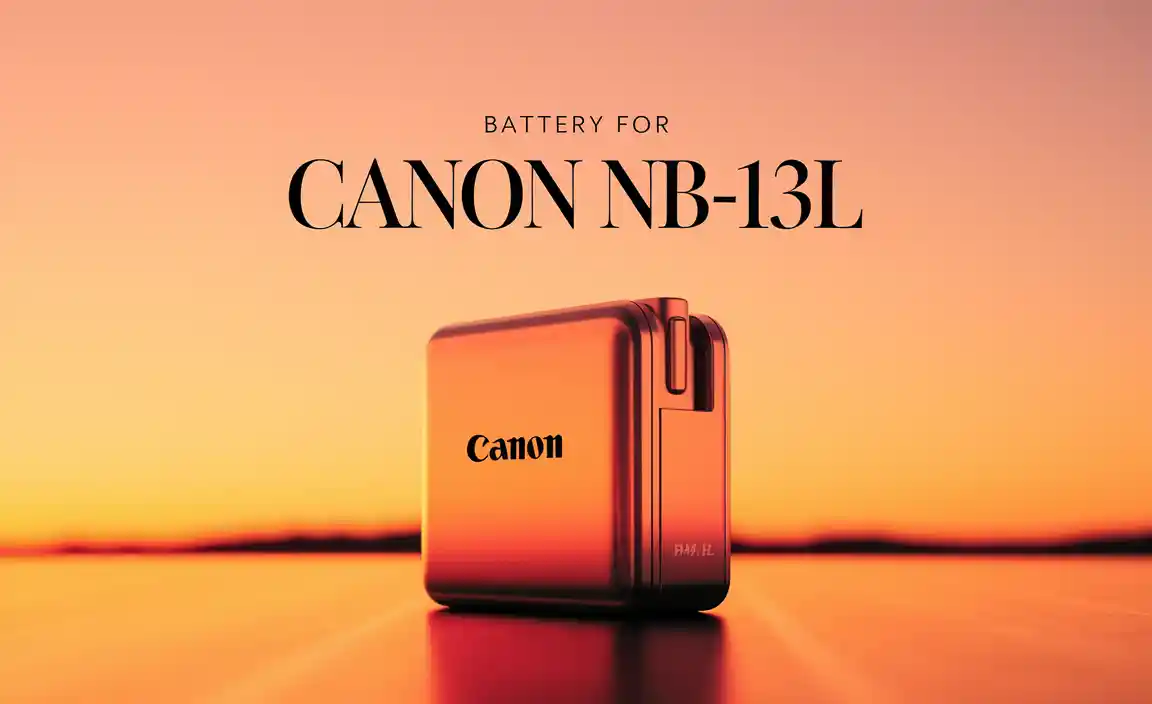Have you ever wondered how your carbon monoxide detector stays alert? It all comes down to one important part: the batteries. Without fresh batteries, these lifesaving devices can’t do their job. Imagine a night when your detector fails to sound an alarm because the batteries are dead. That’s a scary thought.
Many people forget about checking their batteries. Did you know that changing them regularly can keep your home safe? It’s like giving your detector a little boost. Some detectors even have special battery backups. Knowing how to handle batteries for carbon monoxide detectors is essential.
This article will guide you through the types of batteries you need. We will explore how often to replace them. You’ll discover why it’s important to check them regularly. By the end, you’ll realize just how vital these small power sources are to your safety.
Essential Batteries For Carbon Monoxide Detector Safety

Batteries for Carbon Monoxide Detector
Are you sure your carbon monoxide detector is ready to protect you? The right batteries are crucial for your safety. Most detectors use AA or 9-volt batteries, and keeping them fresh is key. Did you know that dead batteries cause many alarms to fail? Regularly checking and replacing them can save lives. Remember, it’s not just about having a detector; it’s about ensuring it works properly. Take this simple step to stay safe at home!Understanding Carbon Monoxide Detectors
Function and importance of carbon monoxide detectors. Common types of carbon monoxide detectors.Carbon monoxide detectors are crucial for safety. They alert us to dangerous gas that is colorless and odorless. This gas can come from stoves, heaters, or cars. Having a working detector helps prevent poisoning. Common types include:
- Battery-operated detectors
- Plug-in detectors
- Hardwired detectors
Choosing the right one ensures your home is safe. Remember, keeping batteries for carbon monoxide detectors fresh is key!
What are the types of carbon monoxide detectors?
There are three main types: battery-operated, plug-in, and hardwired detectors.
Types of Batteries Used in Carbon Monoxide Detectors
Alkaline batteries: pros and cons. Lithium batteries: advantages and disadvantages. Rechargeable batteries: suitable options.Different batteries power carbon monoxide detectors, and each type has its perks and downsides.
Alkaline batteries are common. They are cheap and easy to find, but they may need frequent changes. Pros: Inexpensive and widely available. Cons: Shorter lifespan.
Lithium batteries last longer than alkaline ones. They can work in extreme temperatures. Advantages: Long shelf life and stable performance. Disadvantages: Higher cost.
Rechargeable batteries save money over time. They can be reused but need proper charging. Suitability: Good for frequent use, environmentally friendly.
What is a good battery for a carbon monoxide detector?
Lithium batteries are often recommended for their long life and reliability. They ensure your detector works, keeping you safe from carbon monoxide.How to Choose the Right Battery for Your Carbon Monoxide Detector
Factors to consider: lifespan, performance, and availability. Compatibility with different detector models.Choosing the right battery for your detector is not a game of guesswork. First, think about lifespan. A battery that lasts longer means fewer changes. Next, consider performance. You want a battery that delivers good power and doesn’t leave you in the lurch. Also, check if the battery fits your detector model. Not all batteries are created equal. Finally, look for availability. You don’t want your battery to be on a secret mission, disappearing from stores!
| Factor | Details |
|---|---|
| Lifespan | Choose a battery that lasts at least a year. |
| Performance | Look for batteries with high energy output. |
| Compatibility | Ensure it’s suitable for your detector model. |
| Availability | Check popular stores or online for stock. |
Best Practices for Battery Maintenance
Regular testing and replacement schedules. Signs that indicate it’s time to change the battery.Keeping batteries in good shape is important for your safety. Check your carbon monoxide detector’s battery regularly. Test it monthly. If it makes a chirping sound, it’s time to replace the battery. Change batteries at least once a year. Remember, fresh batteries keep your detector working well!
How often should you test your carbon monoxide detector?
Test it monthly to ensure it’s working properly.
- Replace batteries every year.
- Change if the alarm beeps or chirps.
- Inspect the detector for dust or damage.
Stay safe by monitoring your alarm! A functioning detector can save lives. Regular care helps catch any issues early. Make it a routine in your home!
FAQs About Batteries and Carbon Monoxide Detectors
How long do batteries typically last?. Can I use rechargeable batteries in all models?.Batteries for carbon monoxide detectors are crucial for safety. They usually last from one to five years, depending on the type. If you use the right batteries, they keep your detector working well. Can you use rechargeable batteries? Not all models accept them. Always check the manual. It helps you pick the best battery for your device.
How long do batteries typically last?
The lifespan varies. Regular batteries last about one to five years. It’s best to replace them yearly for safety reasons.
Can I use rechargeable batteries in all models?
No, rechargeable batteries don’t fit all models. Always consult the user manual. It shows what type works best for your detector.
Environmental Impact of Battery Disposal
Proper disposal methods for used batteries. Recycling options and initiatives.Used batteries can harm our planet if not disposed of correctly. They contain metals that can pollute soil and water. To protect nature, we can recycle batteries. Many programs help us recycle old batteries properly.
- Find local recycling stations or events.
- Check if your community has battery drop-off locations.
- Join initiatives that focus on waste reduction.
By recycling batteries, we reduce waste and help the environment. Remember, simple actions can make a big difference!
What should I do with old batteries?
Take old batteries to a recycling center or a designated drop-off location. Some stores also accept used batteries for recycling.
Recent Innovations in Detector Battery Technology
Latest advancements in battery technology for smoke and carbon monoxide safety. Future trends in battery efficiency and reliability.The world of battery technology is always changing. New batteries for carbon monoxide detectors are becoming safer and longer-lasting. Recent inventions now provide batteries that last longer without changing. This means fewer trips to the store! Scientists focus on efficiency too, making sure the batteries work well even in extreme temperatures.
- Longer battery life helps keep families safe.
- Better efficiency means less energy waste.
- Reliability increases, making detectors more dependable.
Some new batteries can even alert you when they need a change! This change makes safety easier for everyone. More innovation is on the way, and we can expect exciting improvements soon.
What is the latest battery technology for smoke detectors?
New battery technology includes longer-lasting batteries that notify users when they need replacement, increasing safety and convenience.
Conclusion
In summary, choosing the right batteries for your carbon monoxide detector is crucial for safety. Always use fresh, high-quality batteries to ensure your alarm works properly. Regularly check and replace batteries at least once a year. You can keep your family safe by staying informed. For more tips, read about battery types and maintenance practices!FAQs
Certainly! Here Are Five Related Questions About Batteries For Carbon Monoxide Detectors:Carbon monoxide detectors need special batteries to work right. You should check the batteries every six months. If they are low, replace them right away. Always use the right type of battery, which is often a 9-volt one. Keeping the batteries fresh helps keep you safe!
Sure! Please provide the question you’d like me to answer.
What Type Of Batteries Are Commonly Used In Carbon Monoxide Detectors?Most carbon monoxide detectors use 9-volt batteries. Some models use AA batteries instead. You can easily buy these batteries in stores. Always check your detector to see what it needs. It’s important to change the batteries to keep it working well!
How Often Should The Batteries In A Carbon Monoxide Detector Be Replaced?You should replace the batteries in a carbon monoxide detector every year. It’s a good idea to do this on the same day each year, like your birthday. If your detector starts beeping, that means the batteries may be dying and need to be changed right away. Keeping fresh batteries helps keep you safe!
Can I Use Rechargeable Batteries In My Carbon Monoxide Detector?No, you shouldn’t use rechargeable batteries in your carbon monoxide detector. These detectors work best with regular batteries. Rechargeable batteries can lose power too quickly. It’s important to keep your detector working well to stay safe. Always use the type of batteries that your detector suggests.
What Indicators Can Alert Me When The Batteries In My Carbon Monoxide Detector Are Low?When the batteries in your carbon monoxide (CO) detector are low, it will start to beep loudly or make chirping sounds. You might also see a warning light that flashes. These sounds and lights tell you it’s time to change the batteries. Always check your detector to keep your home safe!
Are There Any Specific Brands Of Batteries Recommended For Optimal Performance In Carbon Monoxide Detectors?Yes, some brands are better for carbon monoxide detectors. You can use Duracell or Energizer batteries. They last longer and work well. Always check your detector’s manual for the best choice. Keeping fresh batteries helps keep you safe!
{“@context”:”https://schema.org”,”@type”: “FAQPage”,”mainEntity”:[{“@type”: “Question”,”name”: “Certainly! Here Are Five Related Questions About Batteries For Carbon Monoxide Detectors:”,”acceptedAnswer”: {“@type”: “Answer”,”text”: “Carbon monoxide detectors need special batteries to work right. You should check the batteries every six months. If they are low, replace them right away. Always use the right type of battery, which is often a 9-volt one. Keeping the batteries fresh helps keep you safe!”}},{“@type”: “Question”,”name”: “”,”acceptedAnswer”: {“@type”: “Answer”,”text”: “Sure! Please provide the question you’d like me to answer.”}},{“@type”: “Question”,”name”: “What Type Of Batteries Are Commonly Used In Carbon Monoxide Detectors?”,”acceptedAnswer”: {“@type”: “Answer”,”text”: “Most carbon monoxide detectors use 9-volt batteries. Some models use AA batteries instead. You can easily buy these batteries in stores. Always check your detector to see what it needs. It’s important to change the batteries to keep it working well!”}},{“@type”: “Question”,”name”: “How Often Should The Batteries In A Carbon Monoxide Detector Be Replaced?”,”acceptedAnswer”: {“@type”: “Answer”,”text”: “You should replace the batteries in a carbon monoxide detector every year. It’s a good idea to do this on the same day each year, like your birthday. If your detector starts beeping, that means the batteries may be dying and need to be changed right away. Keeping fresh batteries helps keep you safe!”}},{“@type”: “Question”,”name”: “Can I Use Rechargeable Batteries In My Carbon Monoxide Detector?”,”acceptedAnswer”: {“@type”: “Answer”,”text”: “No, you shouldn’t use rechargeable batteries in your carbon monoxide detector. These detectors work best with regular batteries. Rechargeable batteries can lose power too quickly. It’s important to keep your detector working well to stay safe. Always use the type of batteries that your detector suggests.”}},{“@type”: “Question”,”name”: “What Indicators Can Alert Me When The Batteries In My Carbon Monoxide Detector Are Low?”,”acceptedAnswer”: {“@type”: “Answer”,”text”: “When the batteries in your carbon monoxide (CO) detector are low, it will start to beep loudly or make chirping sounds. You might also see a warning light that flashes. These sounds and lights tell you it’s time to change the batteries. Always check your detector to keep your home safe!”}},{“@type”: “Question”,”name”: “Are There Any Specific Brands Of Batteries Recommended For Optimal Performance In Carbon Monoxide Detectors?”,”acceptedAnswer”: {“@type”: “Answer”,”text”: “Yes, some brands are better for carbon monoxide detectors. You can use Duracell or Energizer batteries. They last longer and work well. Always check your detector’s manual for the best choice. Keeping fresh batteries helps keep you safe!”}}]}





